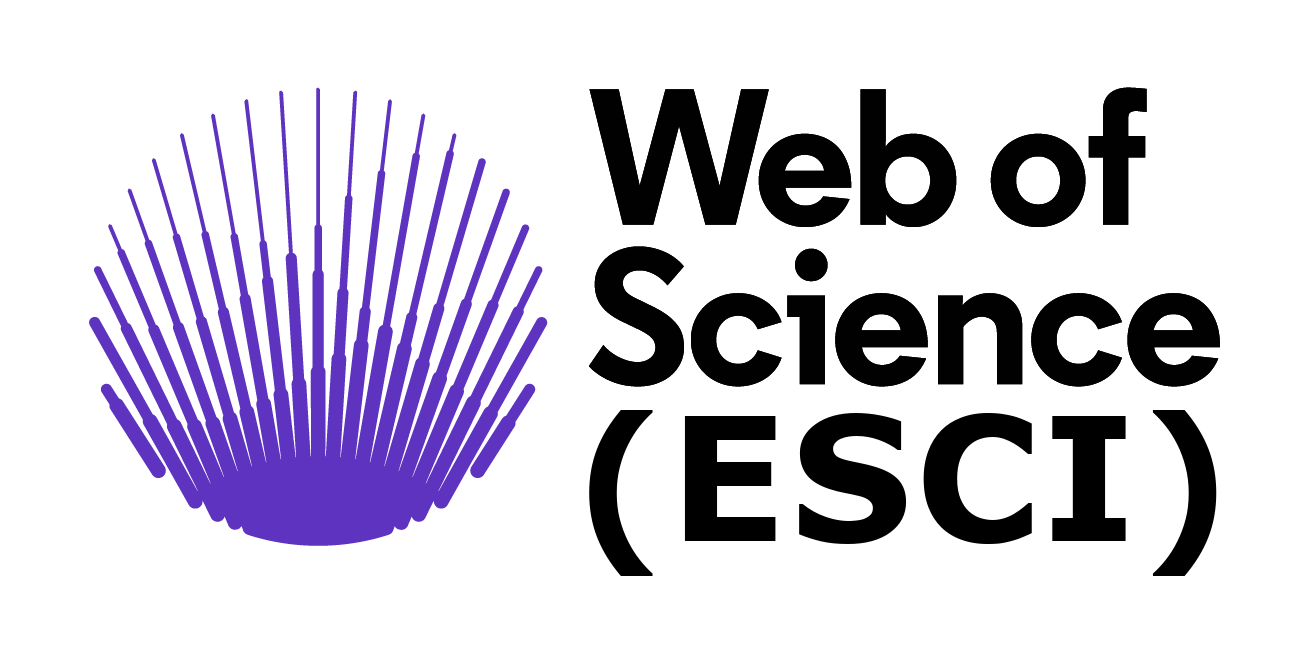Diseño de un prototipo de robot con geometría Rocker-Bogie
DOI:
https://doi.org/10.29019/enfoqueute.804Palabras clave:
Rocker-Bogie, diseño, geometría, robot, simulaciónResumen
En la presente investigación se diseña y valida una geometría de suspensión tipo Rocker-Bogie basados en el análisis de grados de libertad para su futura implementación dentro del sector de la industria de exploración espacial. Ello tiene como finalidad principal la recolección, transporte de basura y desperdicios a sectores estratégicos dentro de las instalaciones, sorteando obstáculos de diferente nivel, aunque también podría aplicarse en el área industrial, agrícola y minera, en las que se requiera un sistema robusto y estable. Se parte estableciendo un factor de seguridad determinado a través de coeficientes que involucren seguridad y economía. Luego, se realiza el cálculo de las dimensiones y fuerzas a soportar por los elementos estructurales conocidos como Rocker y Bogie que son los encargados de transmitir el soporte al chasis, además de brindar soporte a las conexiones para los componentes de los ejes y motores para las ruedas. Del diseño y cálculo de estos elementos depende que el prototipo de robot sea capaz de movilizarse a través de campos irregulares sorteando obstáculos como: anomalías en la superficie, baches, rocas y bordillos. Para la validación del diseño del prototipo se realiza un análisis estático de los elementos estructurales (Rocker y Bogie) por medio del parámetro de Von Misses, obteniendo un nivel de seguridad elevado antes de la ruptura. Posteriormente, se ejecuta la simulación del prototipo en base a una pista creada en el software analizando parámetros de velocidad, aceleración y desplazamientos en los ejes X y Y. Finalmente, se comparan los resultados obtenidos de la simulación basándose, principalmente, en altura y longitud máxima entre eje frontal y posterior, siendo crucial el ángulo máximo de inclinación permisible.
Descargas
Referencias
Bogue, R. (2012). Robots for Space Exploration. Industrial Robot: An International Journal, 39(4): 323.328. doi:10.1108/01439911211227872
Cabrera, J.; Jurado, F., y Vera, D. (2021). Simulación de un deshidratador híbrido indirecto activo mediante el software ANSYS. Enfoque UTE, 12(4): 29-44. https://doi.org/10.29019/enfoqueute.771
Chen, C., et al. (2021). Simultaneous Control of Trajectory Tracking and Coordinated Allocation of Rocker-Bogie Planetary Rovers. Mechanical Systems and Signal Processing, 151: 107312. https://doi.org/https://doi.org/10.1016/j.ymssp.2020.107312
Chinchkar, D., et al. (2017). Design of Rocker Bogie Mechanism. International Advanced Research Journal in Science, Engineering and Technology, 4(1): 46-50.
Conte, R. (2013). Robot Espaciales. Recuperado de http://haciaelespacio.aem.gob.mx/revistadigital/articul.php?interior=39
Eisen, H. J., et al. (1998). Sojourner Mars Rover Thermal Performance. SAE Transactions, 107: 697-707. http://www.jstor.org/stable/44735797
Elishakoff, I. (2017). Probabilistic Methods in the Theory of Structures: Strength of Materials, Random Vibrations, and Random Buckling. Mechanical Systems and Signal Processing (151): 107312
Gonzalez, R., y Iagnemma, K. (2017). Slippage Estimation and Compensation for Planetary Exploration Rovers. State of the Art and Future Challenges. Journal of Field Robotics, 35(4): 564-577. doi:10.1002/rob.21761
Gul, F., et al. (2021). Multi-Robot Space Exploration: An Augmented Arithmetic Approach. IEEE Access, (9): 107738-107750. doi:10.1109/ACCESS.2021.3101210.
Hu, J., et al. (2020). Voronoi-Based Multi-Robot Autonomous Exploration in Unknown Environments via Deep Reinforcement Learning. IEEE Transactions on Vehicular Technology, 12 (69): 14413-14423. doi:10.1109/TVT.2020.3034800
Hu, Y., et al. (2019). Design and Validation of a Self-Driven Joint Model for Articulated Arm Coordinate Measuring Machines. Applied Sciences, 9(15). https://doi.org/10.3390/app9153151
Karras, J. T., et al. (2017). Pop-up Mars Rover with Textile-enhanced Rigid-flex PCB body. IEEE International Conference on Robotics and Automation (ICRA): 5459-5466. https://doi.org/10.1109/ICRA.2017.7989642
Kim, D., et al. (2012). Optimal Design and Kinetic Analysis of a Stair-climbing Mobile Robot with Rocker-Bogie Mechanism. Mechanism and Machine Theory, 50: 90-108. https://doi.org/https://doi.org/10.1016/j.mechmachtheory.2011.11.013
Kornfeld, R. et al. (2014). Verification and Validation of the Mars Science Laboratory/Curiosity Rover Entry, Descent, and Landing System. Journal of Spacecraft and Rockets, 51(4): 1251-1269. https://doi.org/10.2514/1.A32680
Meghdari, A., et al. (2005). A Novel Approach for Optimal Design of a Rover Mechanism. Journal of Intelligent and Robotic Systems, 44(4): 291-312. https://doi.org/10.1007/s10846-005-9013-5.
Misha, S., et al. (2020). Simulation CFD and Experimental Investigation of PVT Water System Under Natural Malaysian Weather Conditions. Energy Re-ports, 6: 28-44. https://doi.org/https://doi.org/10.1016/j.egyr.2019.11.162
Musto, J. (2010). The Safety Factor: Case Studies in Engineering Judgment. International Journal of Mechanical Engineering Education, 38(4): 286-296. https://doi.org/10.7227/IJMEE.38.4.2
Sanguino, T. (2017). 50 Years of Rovers for Planetary Exploration: A Retrospective Review for Future Directions. Robotics and Autonomous Systems, 94: 172-185. https://doi.org/https://doi.org/10.1016/j.robot.2017.04.020
Seralathan, S., et al. (2020). Static Structural Analysis of Wheel Chair Using a Rocker Bogie Mechanism. Materials Today: Proceedings, 33: 3583-3590. https://doi.org/https://doi.org/10.1016/j.matpr.2020.05.658
Smith, B., Y Saaj, C. (2009). Biologically Inspired Nano-rovers: Innovative and Low-Cost Technologies Using Shape Memory Alloys. In Proceedings of 60th International Astronautical Congress.
Tashtoush, T. et al. (2020). Reverse-Twister Swarm Search Algorithm Design: NASA Swarmathon Competition. International Journal of Research Studies in Computer Science and Engineering, 1 (7): 29-36. https://doi.org/10.20431/2349-4859.0701004
Toupet, O., et al. (2018). Traction Control Design and Integration Onboard the Mars Science Laboratory Curiosity Rover. IEEE Aerospace Conference: 1-20. https://doi.org/10.1109/AERO.2018.8396761
Tunstel, E. (2007). Prototype Rover Field Testing and Planetary Surface Operations. Proceedings of the 2007 Workshop on Performance Metrics for Intelligent Systems, 196-203. https://doi.org/10.1145/1660877.1660905
Volpe, R., et al. (1996). The Rocky 7 Mars rover prototype. Proceedings of IEEE/RSJ International Conference on Intelligent Robots and Systems. IROS ’96, 3: 1558-1564. https://doi.org/10.1109/IROS.1996.569020
Xu, Y., y Wang, Z. (2021). Visual Sensing Technologies in Robotic Welding: Recent Research Developments and Future Interests. Sensors and Actuators. A Physical, 320: 112551. https://doi.org/10.1016/j.sna.2021.112551
Yang, J.; Dong, M., y Ye, J. (2017). A Literature Review of the Rocker-Bogie Suspension for the Planetary Rover. AISR, 150: 137-142
Zheng, J., et al. (2018). Design and Terramechanics Analysis of a Mars Rover Utilizing Active Suspension. Mechanism and Machine Theory, 128: 125-149. https://doi.org/https://doi.org/10.1016/j.mechmachtheory.2018.05.002
Publicado
Número
Sección
Licencia
Derechos de autor 2022 Los Autores

Esta obra está bajo una licencia Creative Commons Reconocimiento 3.0 Unported.
Los autores retienen todos sus derechos (© copyright).
- Los autores retienen sus derechos de marca y patente, y también sobre cualquier proceso o procedimiento descrito en el artículo.
- Los autores retienen el derecho de compartir, copiar, distribuir, ejecutar y comunicar públicamente el artículo publicado en Enfoque UTE (por ejemplo, colocarlo en un repositorio institucional o publicarlo en un libro), siempre que se dé el reconocimiento de su publicación inicial en la revista Enfoque UTE.
- Los autores retienen el derecho a hacer una posterior publicación de su trabajo, de utilizar el artículo o cualquier parte de aquel (por ejemplo: una compilación de sus trabajos, notas para conferencias, tesis, o para un libro), siempre que indiquen la fuente de publicación (autores del trabajo, revista, volumen, número y fecha).
























